Depression is the most common mental disorder in the United States, affecting about 6.7% of the country’s population age 18 and older in a given year. According to the newest edition of The Diagnostic and Statistical Manual of Mental Disorders (also known as DSM-5), some of the main symptoms of depression include diminished interest or pleasure in almost all activities, slowing down of thought, reduction of physical movement, loss of energy, and feelings of worthlessness. A depressed person usually feels numb and isolated with a mind filled with all kinds of negative thoughts. And you can’t “snap out of it” or “look at things from a different perspective” because that’s not how mental disorders work.
One of the most common misunderstandings about depression is that this mental disorder is almost the same as sadness. And that’s absolutely not correct. Occasional sadness is an inevitable part of human existence. It visits us from time to time (usually after stressful or upsetting life events) and is a perfectly normal feeling that you sometimes simply can’t avoid. Though at times it might not feel like it, sadness can be a really valuable experience to a person, since it gives one some space to reflect and works as a reminder of what truly matters to them.
With depression, it’s a totally different thing. But the problem is, people tend to mix up these two words. A lot. In reality, these words refer to two absolutely different experiences. Depression is a serious mental disorder with long-lasting symptoms that can lead to serious health complications, including putting your own life at risk. Moreover, while sadness usually has a specific reason behind it, depressed individuals most of the time can’t even pinpoint the reason why they feel the way they do.
Another difficult thing about depression and other mental disorders as well is that they, a lot of the time, are pretty much invisible. A person struggling with depression from the outside can look perfectly normal. Despite that, if we’re paying enough attention to the ones around us, we can often tell if they’re not doing that great.
More info: Twitter
Recently, Twitter user carolfrancescaa shared an important thread of warning signs that can possibly tell us that a person is struggling with depression
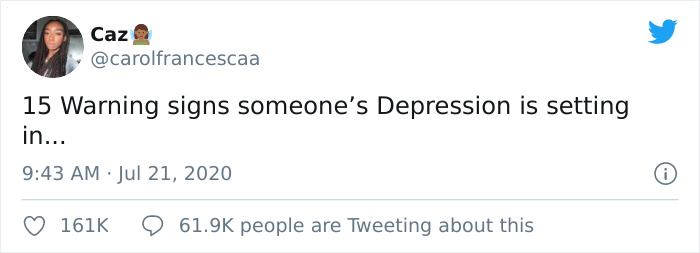
Even though depression can have many faces, here are some of the signs we all should pay attention to
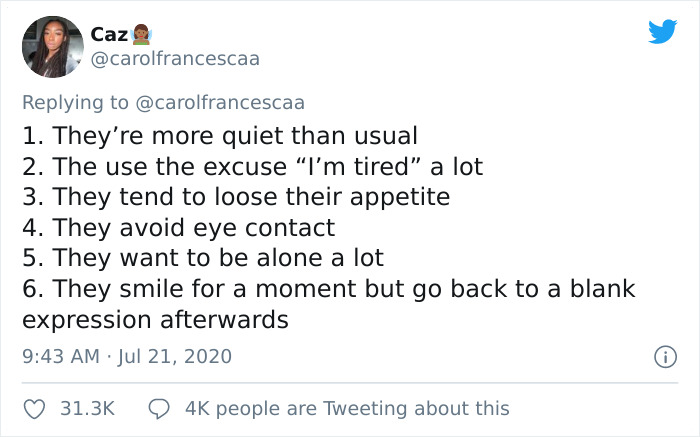
Caz suggests that people struggling with depression can become quieter than usual, seem more tired, can lose their appetite, start spending a lot of time alone, start avoiding eye contact, and not show genuine positive emotions.
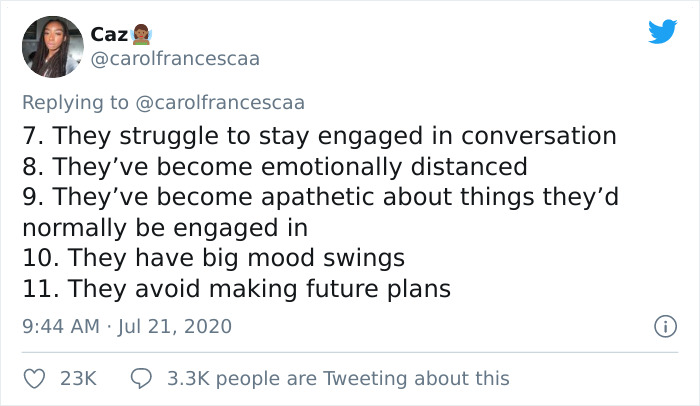
Caz continues by adding that a depressed person can struggle to stay engaged in a conversation, become emotionally distant and apathetic, start experiencing big mood swings, and can seem to be avoiding making future plans.
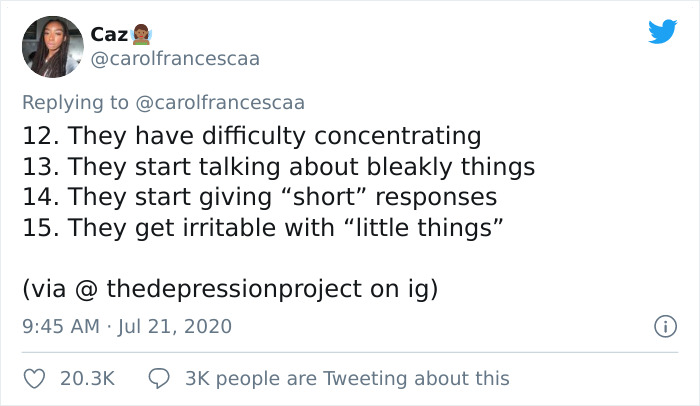
Depressed individuals can also seem distracted, start talking less, and become much more irritable.
Caz ends her thread by emphasizing that you should definitely talk to a person and ask them how they’re doing if you notice any of these signs
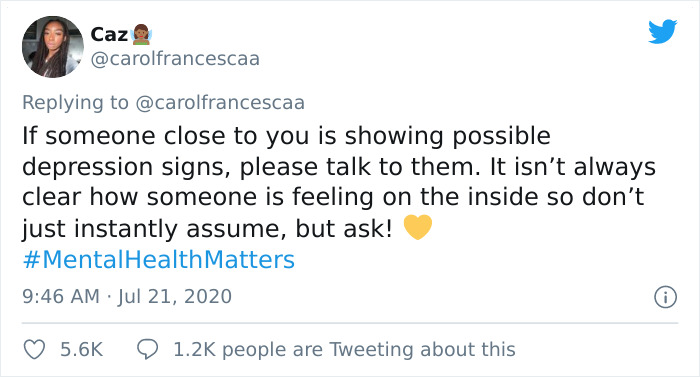
Some Twitter users contributed by adding some more signs to the list
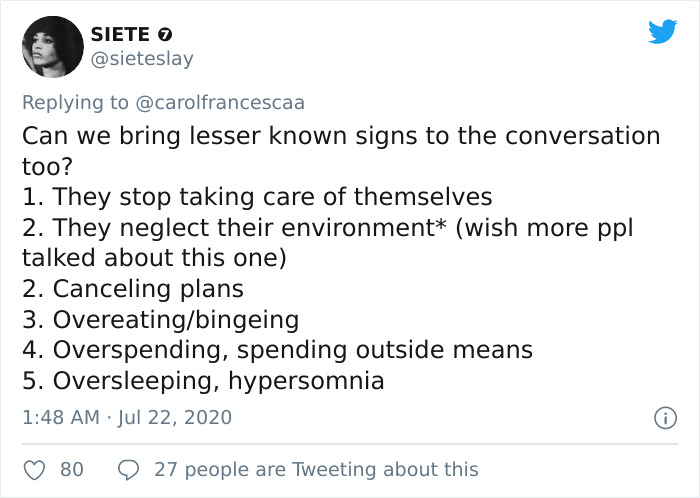
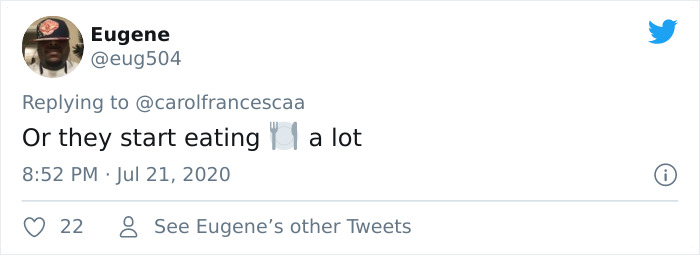

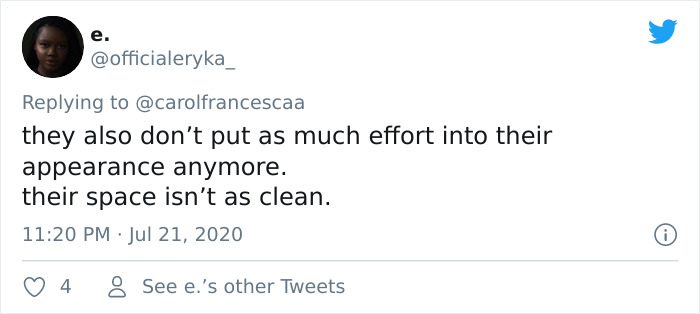
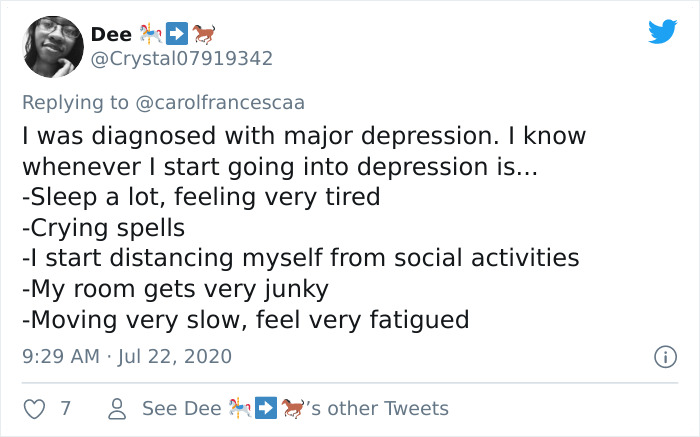
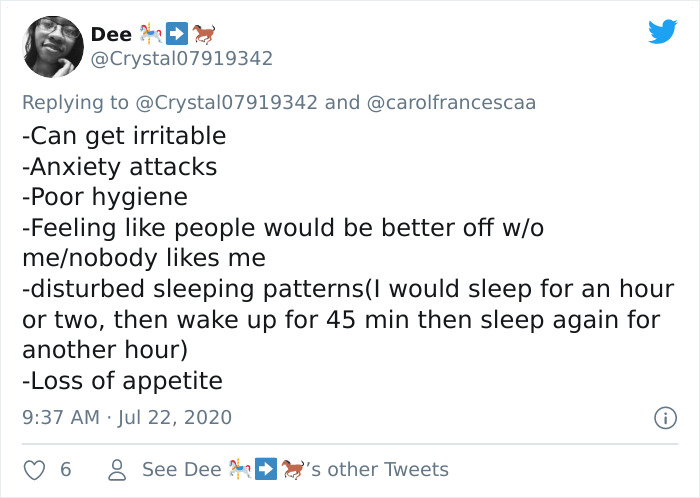
Some people shared their own experience living with this mental disorder
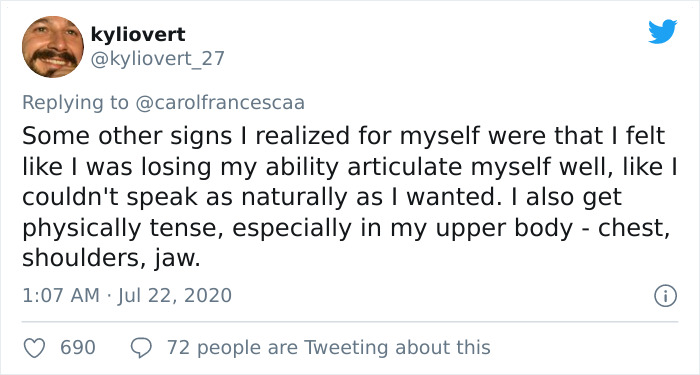
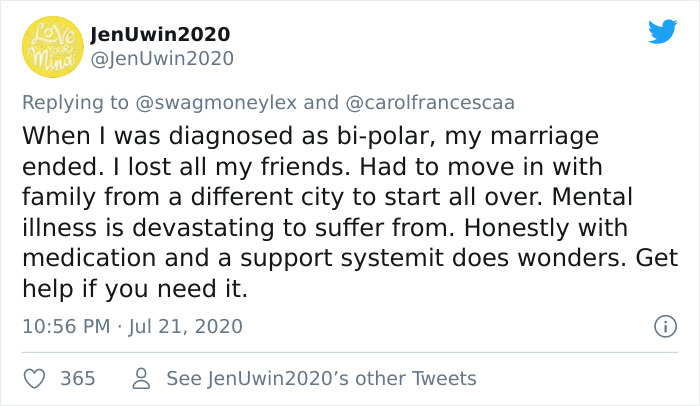
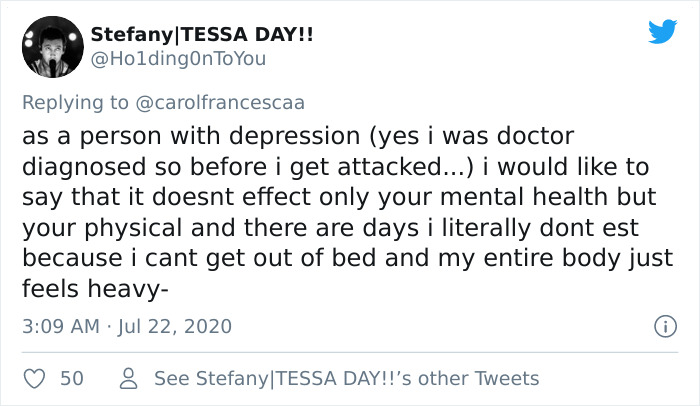
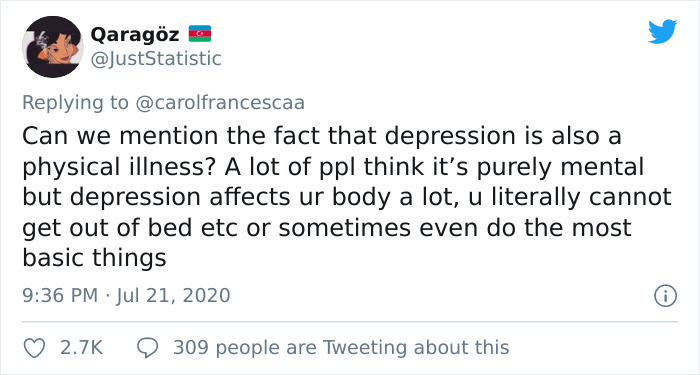
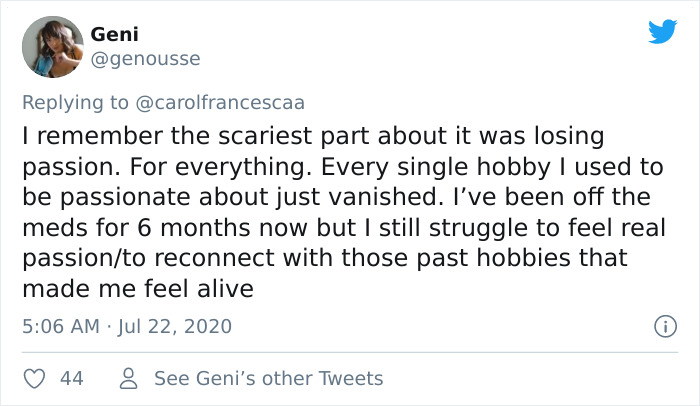
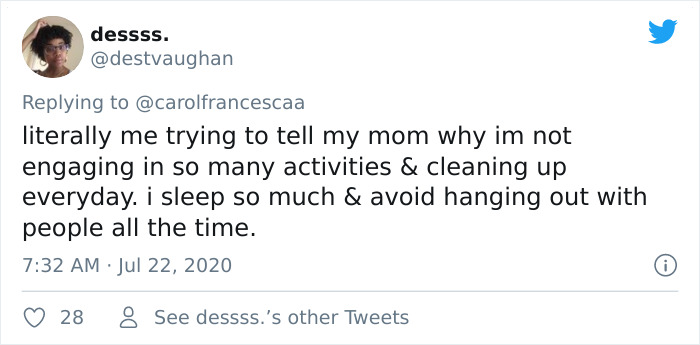
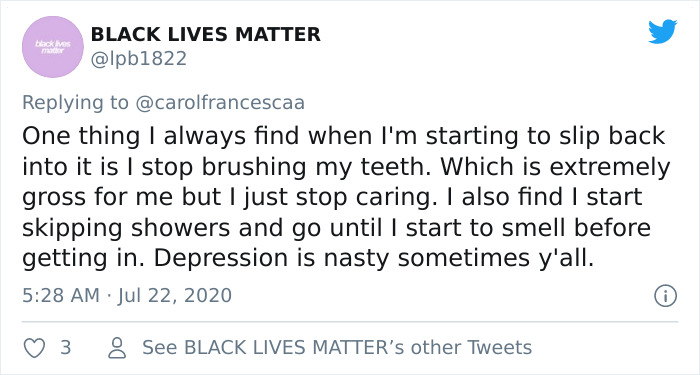
from Bored Panda https://ift.tt/3htrb2u

No comments:
Post a Comment